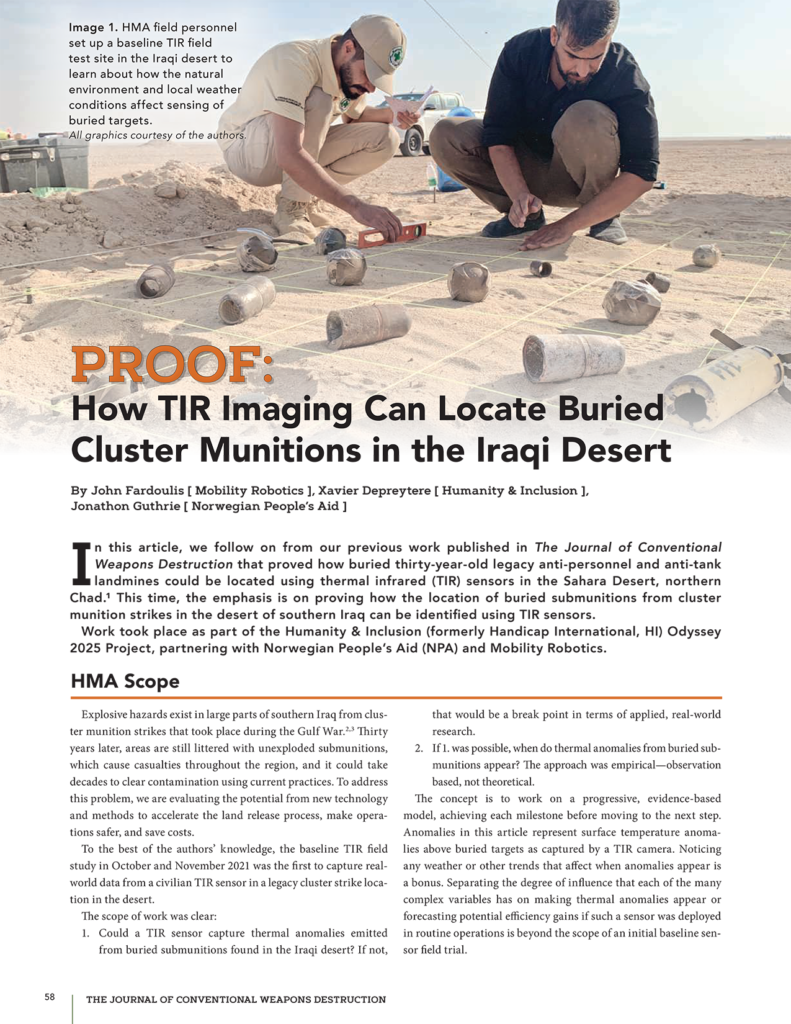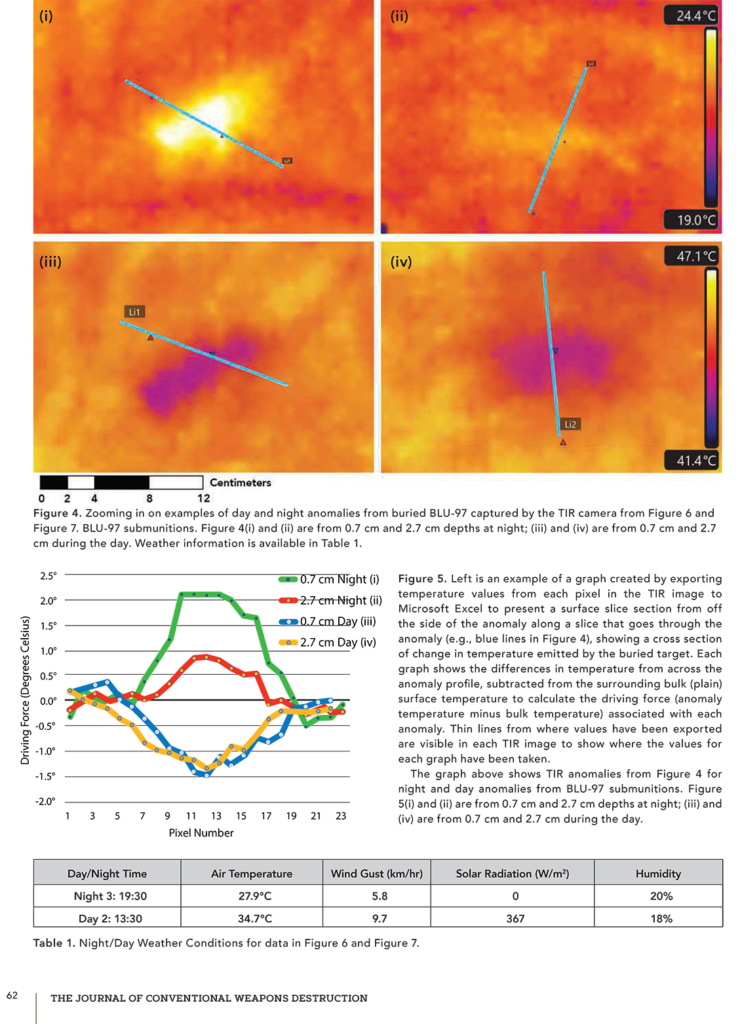
We’re proud to announce that our latest peer-reviewed sensor research article has been published by our friends at the Journal of Conventional Weapons Destruction.
This time, the location for sensor field testing was in the desert of southern Iraq, near the village of Al Bussayah, in the Al Muthanna province.
The research follows on from our previous peer-reviewed article in the Journal proving how TIR imaging from UAVs/small drones could be used for locating buried antipersonnel and anti-tank landmines in the Sahara Desert, Chad.
Fieldwork took place in October and November 2021, as part of the Odyssey 2025 Project led Humanity & Inclusion (formerly Handicap International, HI), partnering with Norwegian People’s Aid (NPA), two well-known INGOs in the humanitarian mine action (HMA) sector. Synergy was achieved by combining specialised technical and scientific knowledge from Mobility Robotics, together with INGOs who work at the pointy end of humanitarian action.
The approach was empirical, not theoretical – using an evidence-based approach. The article was written in plain English, simplifying a lot of the complex background science to encourage other HMA actors to also conduct baseline trials – as a way of gaining knowledge required to determine if TIR sensors can be practical as a HMA tool in each geographic region.
This project provided a blueprint regarding how collaborating can help the HMA sector in general. NPA hosted baseline TIR field trials in Al-Bussayah, southern Iraq, with logistical and technical support provided by their operations, clearance, and survey teams. Valuable expertise was provided by NPA specialists who provided access to confirmed hazardous areas, weathered targets, an open desert location to establish the study area, and security to watch over the site.
Key findings from the Al Bussayah (southern Iraq) baseline TIR field study in Oct/Nov 2021 were that:
- TIR anomalies from buried cluster munitions, AP landmines and ERW not visible to the naked eye could be captured indicating their position under favourable conditions.
- TIR anomalies from buried cluster munitions and ERW were captured by the sensor for most of the night in both soft sandy and hard concreted ground found in the area, apart from when it was windy.
- TIR anomalies from buried AP landmines were visible to the sensor for extended periods during the night, apart from when it was windy.
- TIR anomalies (all targets) from soft sandy ground were clearer than from hard, concreted ground.
- Even though patchy at times, TIR anomalies from buried cluster munitions were visible for several hours during the day in sandy ground during favourable conditions.
- TIR anomalies from all targets buried in sandy ground appeared for a shorter time during the day than at night.
- TIR anomalies from all targets were generally weak during the day in hard ground.
- Wind gusts had a detrimental effect on the ability of the sensor to capture TIR anomalies.
Work has continued in 2022, with two more baseline TIR sensors trials in the Middle East covering metal anti-tank landmines, IED componments and improvised landmines.
Targets were buried in a fifth location (and fourth country) last week to continue our empirical, field driven approach. Data will be recorded in July/August, after targets soak in. More on later studies shortly.
